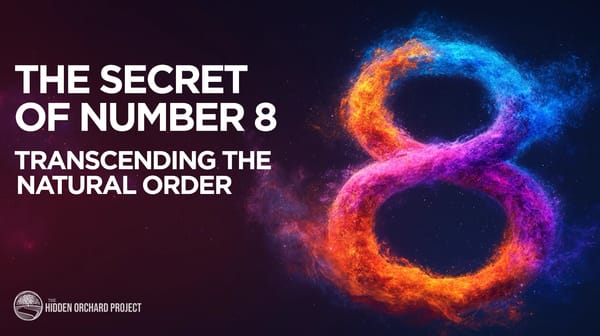The Nefesh - Soul Series pt. 1
“Some people are inclined to contemplate the essence of their souls. Others can live their entire lives - even lives of intellectual activity - without taking an interest in their souls at all.

Part 1 | Part 2 | Part 3 | Part 4 | Part 5
In his classic book, "The Soul", Rabbi Adin Steinsaltz states¹;
“Some people are inclined to contemplate the essence of their souls. Others can live their entire lives - even lives of intellectual activity - without taking an interest in their souls at all. These different attitudes are influenced by personality certainly, but also by our inner world of experiences”.
For those who find themselves curious about the nature of their soul, we’ll explore these components at a deeper level in a three-part series. Using the lessons from tradition - and some modern sources - we’ll get better acquainted with the particular expressions of the human soul and how these are revealed in daily life.
The Nefesh
In the midrash, we're told the human soul is comprised of five parts. The (3) we will focus on in this series are, in descending order; Neshamah, Ruach, and Nefesh.
Though considered the lowest level of the soul, the Nefesh is the vital, animating life force behind all living and sentient organisms. Unlike the other levels of the soul, the Nefesh is oriented to the body and is considered to be a component of physicality.
The human body functions as a result of a significant number of autonomic processes that are not controlled by the conscious mind. Among these are; respiration, circulation, digestion, hormone production, and many more. The Nefesh is the intelligent force behind these processes. (While these are not fully governed by the conscious mind, many of these functions can be influenced and guided by the mind as we will explore in this series).
"Animal" Soul
It is traditionally taught that animals have a Nefesh as well, though this is not the same as that of a human. This is because each creation has its own Nefesh corresponding to the functional capabilities of the particular organism. In this tradition, animals and humans have similarities, but humans are not simply more advanced animals.
Associated with the physical world called 'Assiyah', the Nefesh governs the actions and deeds we carry out. Thus the primary occupation of the Nefesh is oriented toward the acquisition of the materials, resources, and conditions needed to thrive, (ie; food, drink, sleep, etc). When we find ourselves seeking these in excess, there is often an imbalance that may need investigation.
Tradition also teaches that the physicality-centered Nefesh will, by default, be a source of opposition to the goal of the spiritually-centered Neshamah. Thus the battle for spiritual growth can be won by developing oneself away from a temporally-dominant lifestyle. The New Testament, speaks of this idea often;
“Beloved, I urge you as sojourners and exiles to abstain from the passions of the flesh, which wage war against your soul.” - 1 Peter 2:11
Location
Unlike other levels of the soul, the Nefesh is the only one we can attempt to locate as it is generally associated with the biofield that is enmeshed around the human body. The Torah tells us the “Soul is in the blood” (Deut. 12:23), thus wherever the blood travels, the Nefesh can be found.
In this, there is an affinity of form between the concepts of “Energy”, and “Qi”. (Though, true practitioners of Chinese Medicine will clarify that Qi, though related to the word "Spirit", is a pragmatic way of understanding the way fascia enables or inhibits the flow of fluids and electrical information throughout the body and organ systems). In my opinion, these are often metaphors that seek to describe the way the visible interacts with a subtle invisible force. Though subject to abstraction, there is much that can be learned from these other traditions. As a result, modern medicine has begun to explore these traditions over the past few decades, adding further insight and guidance for understanding.²
Considering the body and soul(s) are a vast network of interconnected systems, an imbalance in the Nefesh can influence the function and expressions of other levels of the soul, causing multi-leveled misalignments. Therefore, it is important that we take care of the body as best we possibly can to prevent a disassociation between the emotional (Ruach) and intellectual (Neshamah) levels of the soul.
Elevating the Nefesh
Balance
In essence, the elevation of the Nefesh begins by carefully balancing our physical drives. Over-eating, drinking too much, etc., can dampen our spiritual acuity.
Emotional Coherence
As Ruach and Nefesh are connected, influence can come from above the Nefesh as well. For instance, overdrive in a particular physical desire may indicate an emotional imbalance.
Deeds
A powerful way to develop the Nefesh is to develop an awareness of the quality of our deeds, and our motives behind them. Additionally, the Torah details a long list of things we should be careful to avoid, as these can disconnect us.
To develop better habits, tradition suggests something similar to, 'fake it until you make it', adding a healthy new habit - like prayer - until one begins to grasp the deeper mechanisms behind it. You may find, as the Nefesh is the densest of the souls, and the one most occluded from the light of the Creator, it will not be surprising to find that building a new physical habit can be very difficult at first.
Charity
Another way to rectify and elevate the Nefesh is to engage in a positive activity that is counter-intuitive to the Nefesh and its self-oriented desires. Similar to encouraging a toddler to share their toys with another, eventually they will begin to understand why they should do so. Other examples might be; giving charity - money or resources, serving others in need, or developing a sense of moderation and abstinence from things that are not healthy.
With All of Your Soul
A staple prayer in Orthodox Judaism, the Shema³, gives us a glimpse of this in the opening lines. We're urged to 'love the Creator with all of our Nefesh'. This is precisely because the Nefesh will put up the greatest resistance to this plan.
While this path may look different for everyone, most of us in the west have been trained to ignore the unseen and hidden dimensions of our existence. The essential goal, then, will be to look beyond the physical world and recognize the various domains of spiritual growth.
Notes:
¹ The Soul - Adin Steinsaltz
² https://www.ncbi.nlm.nih.gov/pmc/articles/PMC4654789/
³ ואהבת את יהוה אלהיך בכל־לבבך ובכל־נפשך ובכל־מאדך
"You shall love your G_D with all your heart and with all your soul (Nefesh - Naf'sh'cha) and with all your might." - Deuteronomy 6:5
Looking for more like this?
Exploration of the Soul, available on Amazon.com

Exploration of the Soul
Discovering the Nature of the Human Soul, Through the Wisdom of the Bible and Jewish Literature.




